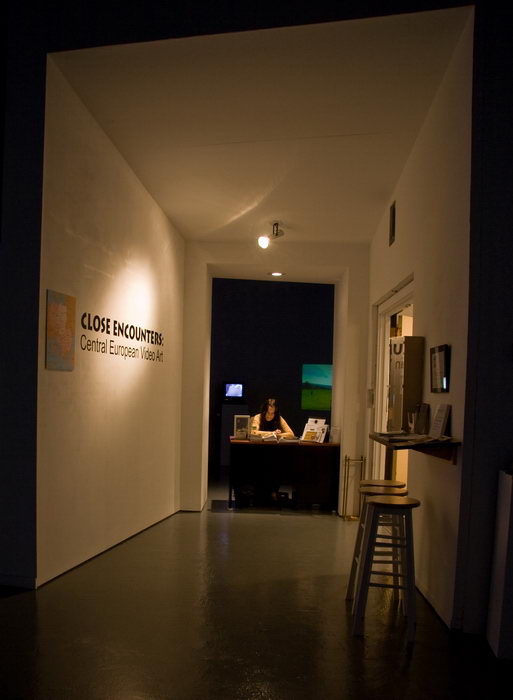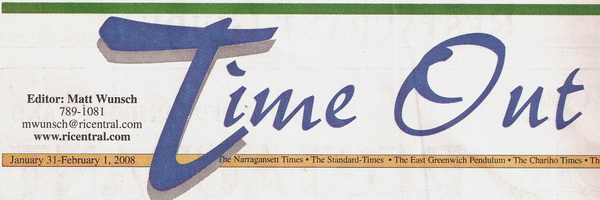'Close Encounters'
at URI Gallery uncovers the human element of culture
TIME OUT; Narragansett Times
Thursday, January
31, 2008
By MARK MEEHAN
KINGSTON-It is
one thing to know the history of a country, the pivotal dates and influential
figures of a time, and another to get to know the people. To know the people,
the human element of a culture, that is an indispensable and understated aspect
of learning.
Now at the Fine
Arts Center Galleries at the University of Rhode Island you may see firsthand
the human element of central European cultures in the video art exhibit “Close
Encounters”.

Hungary, Poland, the Czech Republic and Slovakia are represented by six video
artists in the Main Gallery. Slovakian guest curator Viera Levitt, now a resident
of Wakefield, selected stories of her familiar culture to share with Rhode Island.
“I wanted to bring something you can relate to. Something you feel connected
to,”” said Levitt. At
multiple monitor stations visitors may view video loops at their own pace.
The stories in the films have a delicate quality in dealing with the fragility
of human emotion. One such film titled It Doesn’t Matter, by Katerina Seda of
the Czech Republic, documents her own attempt to awaken her grandmother from
years of lethargy. Seda’s grandmother made a decision to do nothing; she would
not communicate, she would watch the same television channel all day every day
not thinking anything of it. So Seda attempted a social intervention, an artistic
experiment by means of art itself. She gave her grandmother a drawing book and
pen. She began to draw. Seda would ask her why she drew the things she did,
which opened up conversation that eventually led to an awakening of sorts. A
truly touching piece. The drawings have been printed in a book for viewing at
the exhibit.
Another interesting
piece is a video from Polish artist Artur Zmijewski. It is one that shows soldiers
singing and marching in unison. At the beginning the soldiers march in uniform
with a bit of passive pride. Then suddenly they are in a dance studio marching
and singing naked, with guns over their shoulders. But something changes in
them. They are laughing in embarrassment at themselves. All of the soldiers
in the film are actually real soldiers, they are not actors.
“These are human
stories about vulnerability,” said Levitt.
Zmijewski
has another film in the Main Gallery, in which deaf children sing hymns in a
church by a monumental organ. These children do not look handicapped. When you
put on the headphones and begin to listen you hear a cacophony. It takes a moment
to understand what is actually going on. Then you realize that these deaf children
are sending a message to God.
“They are singing
a religious song. Is it going to be delivered to God even though it is not perfect,”
questioned Levitt, hinting at he message that she hears when watching the film.
The central work
of the exhibition is a film by Milena Dopitova. The piece shows herself with
her twin sister dancing and playing the piano. A make-up artist transformed
the two into older women, so that they could experience a single day as old
ladies. Levitt said that the idea for the film came from Dopitova’s own experience
when she one day saw two sisters dancing in a park on a grey and rainy day.
Why were they dancing? What brought them to that point?
In the curator’s
statement Levitt writes, “…Where is Slovakia? Where is Central Europe? What
are people like there? What do they think about? By organizing this show I wanted
to answer some of these questions and in the process, make art from Central
Europe more familiar to visitors and residents of Rhode Island……”
And “Close Encounters”
does just that.
If you
go
“Close
Encounters” is currently on display until Feb. 10 at the Fine Arts Center Galleries
at the University of Rhode Island. It is free and open to the public. For more
information visit www.uri.edu/artgalleries or call 874-2775.
Copyright © 2008
TimeOut. All Rights Reserved.


